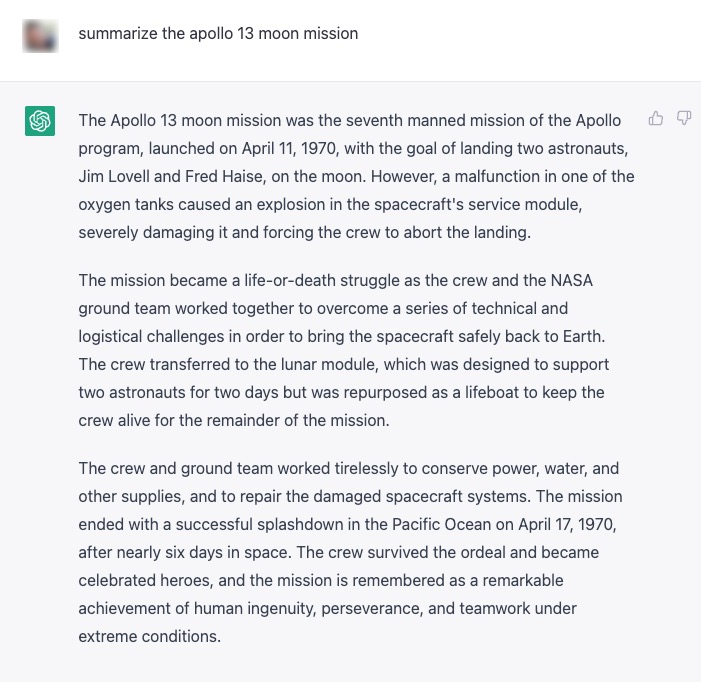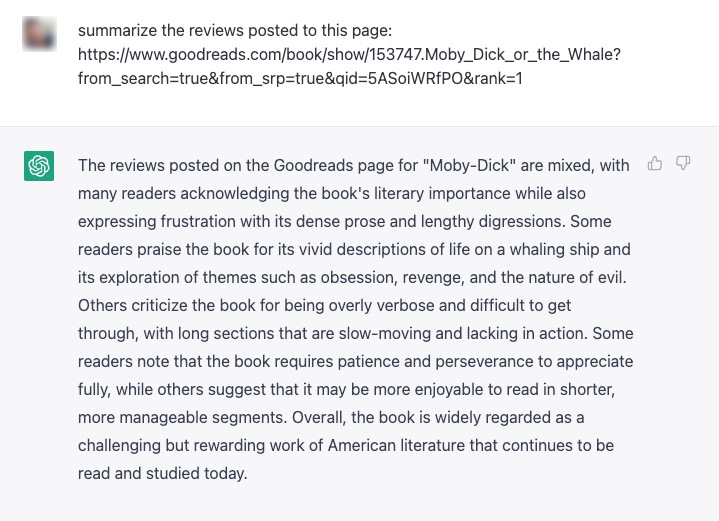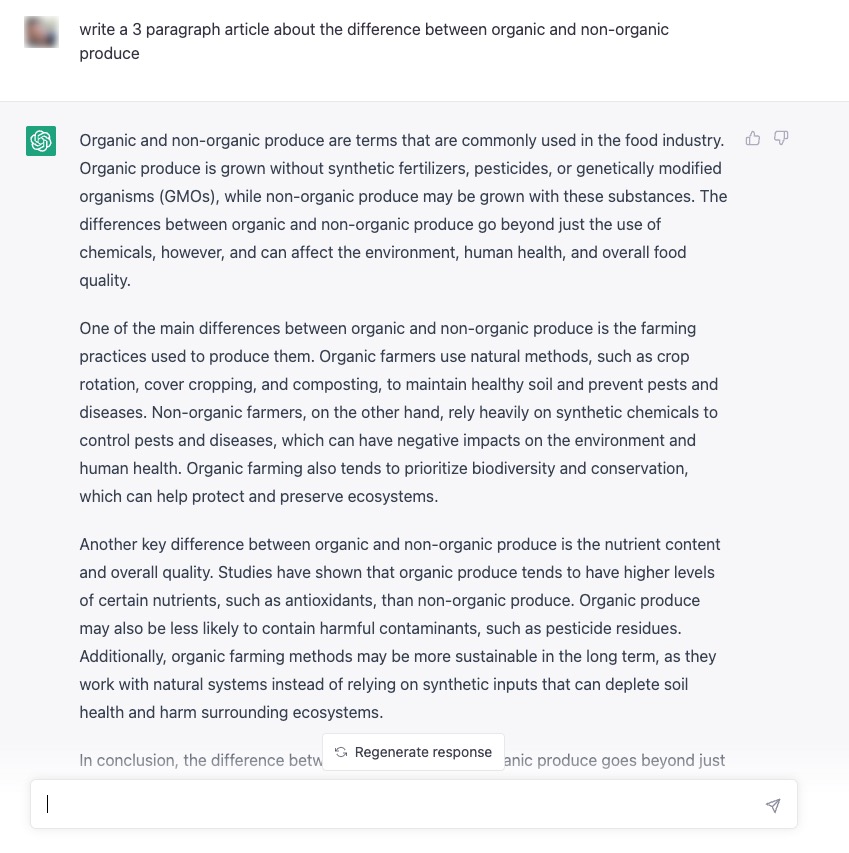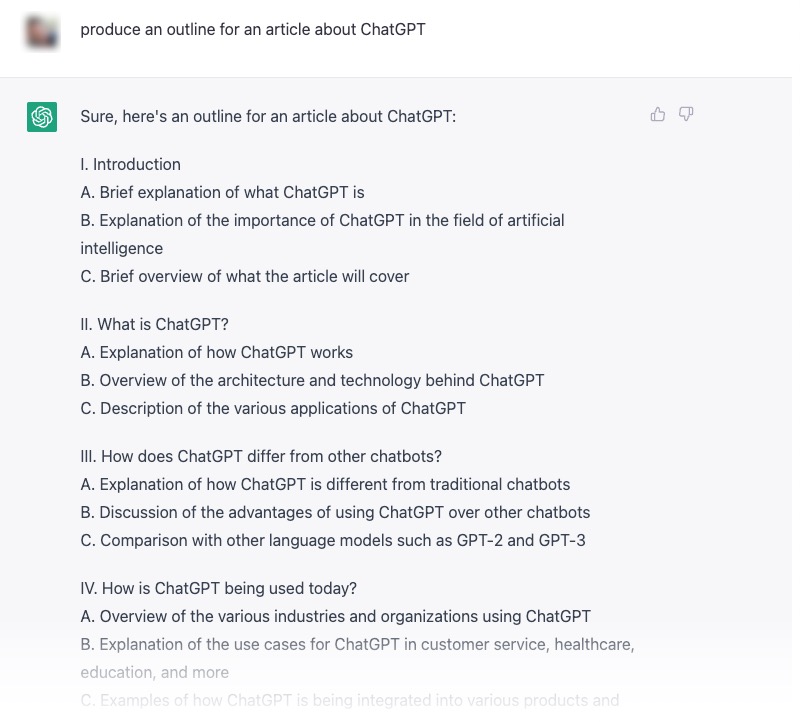How can ChatGPT work for your business?

Since OpenAI introduced ChatGPT to the public, speculation has been fierce around the potential benefits (and imagined hazards) of this cutting-edge technology.
OpenAi describes ChatGPT as “a….model which interacts in a conversational way. The dialogue format makes it possible for ChatGPT to answer followup questions, admit its mistakes, challenge incorrect premises, and reject inappropriate requests.” GPT stands for “Generative Pre-Trained Transformer” and, in a nutshell, means an AI (artificial intelligence) algorithm that can understand and generate human-like language.
It is the quality of its conversation that has developers and businesses excited. Not only can ChatGPT respond in easy to understand text, its ability to understand natural language inputs is groundbreaking. Imagine a typical shopping cart experience where a user is asked to click on a hierarchy of product categories and then clicks some more to filter by price and size and color to find a shirt they would like to purchase. Now imagine an interface where the user types: “show me blue men’s shirts in XL that cost under $30”. This language-based capability opens up many more customer-facing tasks to automation with richer and more satisfying experiences.
In addition to being able to clearly express verbal concepts, ChatGPT can be valuable for summarizing and analyzing input, especially data that is linguistic in nature such as books, articles, or comments.

Here are several use cases for how ChatGPT might eventually be integrated with websites to create surprising user experiences and enhance business processes.
Customer Support
AI powered chat is not new to customer support but ChatGPT represents a leap in human-AI interaction that will expand its impact and usefulness. When more customer questions and problems are answered by automated support, only the most complex issues get passed on to live agents.
Customer Research
ChatGPT’s summarization abilities can help businesses analyze large amounts of feedback, comments for example, and provide insight into what customers are thinking and saying.

Personalization and Customization
As in our example above, natural language requests such as “show me blue shirts” could improve user experience on a site by helping visitors find products more quickly and efficiently. Next, imagine a tool that prompts the user for more information and asks them what they like! These conversations could produce personally curated results for shoppers that take into account their preferences and requirements. Similarly, summarizing a specific user’s comments or preference patterns – such as above, but individually - could lead to equally specific design and support choices for that user. Creative agencies such as web developers or advertisement creators could use chatbots to intake client requirements and then summarize comments from multiple stakeholders during review cycles. Anywhere a conversation improves outcomes is a starting place for businesses to explore chat as a process customization tool.
Search
Industries that produce vast quantities of content – think legal and patent filings, case studies, business and scientific research – often then require many man-hours of labor to sift and filter that content to use it. ChatGPT can instead analyze large datasets and return results based on natural language intelligence. The benefit is that the AI can find information conceptually instead of depending on keywords that may or may not be included in relevant content. Imagine the benefit to a lawyer searching for existing patents using the keyword “coffee filters” only to discover that they missed several using the term “grounds basket”.
Content Creation
ChatGPT’s effortless creation of written material could produce (or at least facilitate) everything from product descriptions to industry-specific reports and documentation. Here are some examples of how writers might harness ChatGPT to create or facilitate their creation process:
1. Generate a Complete Article - There are some topics with enough source content available to the ChatGPT model that it can produce a complete, if simple, one page article. Note that the author will still carry the burden of fact-checking and proof-reading. The ChatGPT AI is very good at creating authoritative-sounding sentences and paragraphs, but has no concept of “fact” or “truth”.

Generic content like this can be a huge benefit for websites seeking to improve their SEO (search engine optimization) and small business owners who need copy for their marketing material.
2. Generate Outlines and Lists – For more complex topics, or topics that rely on specific or proprietary details and facts, authors can shave some time off their creative process by asking ChatGPT to produce an outline. This can help with “blank page syndrome” and might even offer the author ideas they might not have considered.

Similarly, lists are great starting places for content ideas and creative brainstorming.
3. Automate Repetitive Tasks – Because ChatGPT can learn from content and data that businesses produce themselves, it is a small leap to then ask it to produce content that is standardized or that follows predictable patterns. Lawyers produce case summaries, social media personalities produce a “something” of the day, and most businesses produce invoices of some sort. These are all examples of content that an AI could learn to produce with just a few additional prompts.
4. Write or Debug Code – Some of the most curious experimentation with ChatGPT has been in the area of coding. While it is far from being able to produce finished, working software from pure text prompts, programmers are finding it useful for generating some basic commands and for debugging.
While all of the above represent realistic implementations, this technology is so new and changing so rapidly that its true potential and limitations remain a moving target. GPT-4, the next, even more robust and accurate AI model has already been launched by OpenAI since ChatGPT (based on GPT3.5) was released 5 months ago.
That said, those who take advantage early will not only define that potential, but benefit longer from it. According to OpenAI, companies such as Duolingo, Stripe and Morgan Stanley are working with GPT-4 to develop products, and Expedia, Instacart, Slack, and Zapier have developed plugins using the GPT-4 language model.